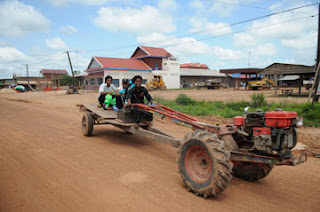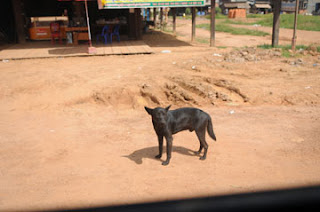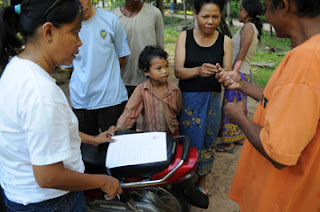We were greeted with a grand reception of all the village's women and children. These two women are the oldest in the village, 79 and 77 years old. We offered them packages of clothing before entering the school.
The one-room school house was constructed out of old wood and dried banana leaves. There were holes in the walls, and the children were packed inside very tightly.
This is only the morning session, mind you. More children will come to school in the afternoon.

The children were all very well behaved, sitting bewildered, trying to recite the English greetings they had learned only hours before, clapping very mechanically as if they had never done so before.
We passed out candy to the children, each politely saying "thank you" and taking only one piece that we placed in their small, grateful hands.


Professor Rahtz had bought loaves of bread to hand
 out the the villagers. Some of the smaller ones were so hungry they devoured the bread before we could leave. They were very thankful for our gifts; not often do you find a loaf of bread winning so sincere of a "thanks".
out the the villagers. Some of the smaller ones were so hungry they devoured the bread before we could leave. They were very thankful for our gifts; not often do you find a loaf of bread winning so sincere of a "thanks".Eventually we said our goodbyes and made the long trip back home. Not to sound cliche, but it was certainly an eye opening experience. Not only did we witness the dynamics of the country Cambodian culture, but we got to see first hand the poverty of the Cambodian people. It is amazing how little can make such a huge impact on the lives of these people. Sometimes just a smile is enough for these people who have seen more fighting and killing in their recent history than loaves of bread.
















